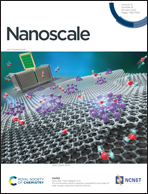Progress in electrocatalytic hydrogen evolution of transition metal alloys: synthesis, structure, and mechanism analysis
Abstract
At present, the problems of high energy consumption and low efficiency in electrocatalytic hydrogen production have limited the large-scale industrial application of this technology. Constructing effective catalysts has become the way to solve these problems. Transition metal alloys have been proved to be very promising materials in hydrogen evaluation reaction (HER). In this study, the related theories and characterization methods of electrocatalysis are summarized, and the latest progress in the application of binary, ternary, and high entropy alloys to HER in recent years is analyzed and studied. The synthesis methods and optimization strategies of transition metal alloys, including composition regulation, hybrid engineering, phase engineering, and morphological engineering were emphatically discussed, and the principles and performance mechanism analysis of these strategies were discussed in detail. Although great progress has been made in alloy catalysts, there is still considerable room for applications. Finally, the challenges, prospects, and research directions of transition metal alloys in the future were predicted.

- This article is part of the themed collection: Recent Review Articles


 Please wait while we load your content...
Please wait while we load your content...